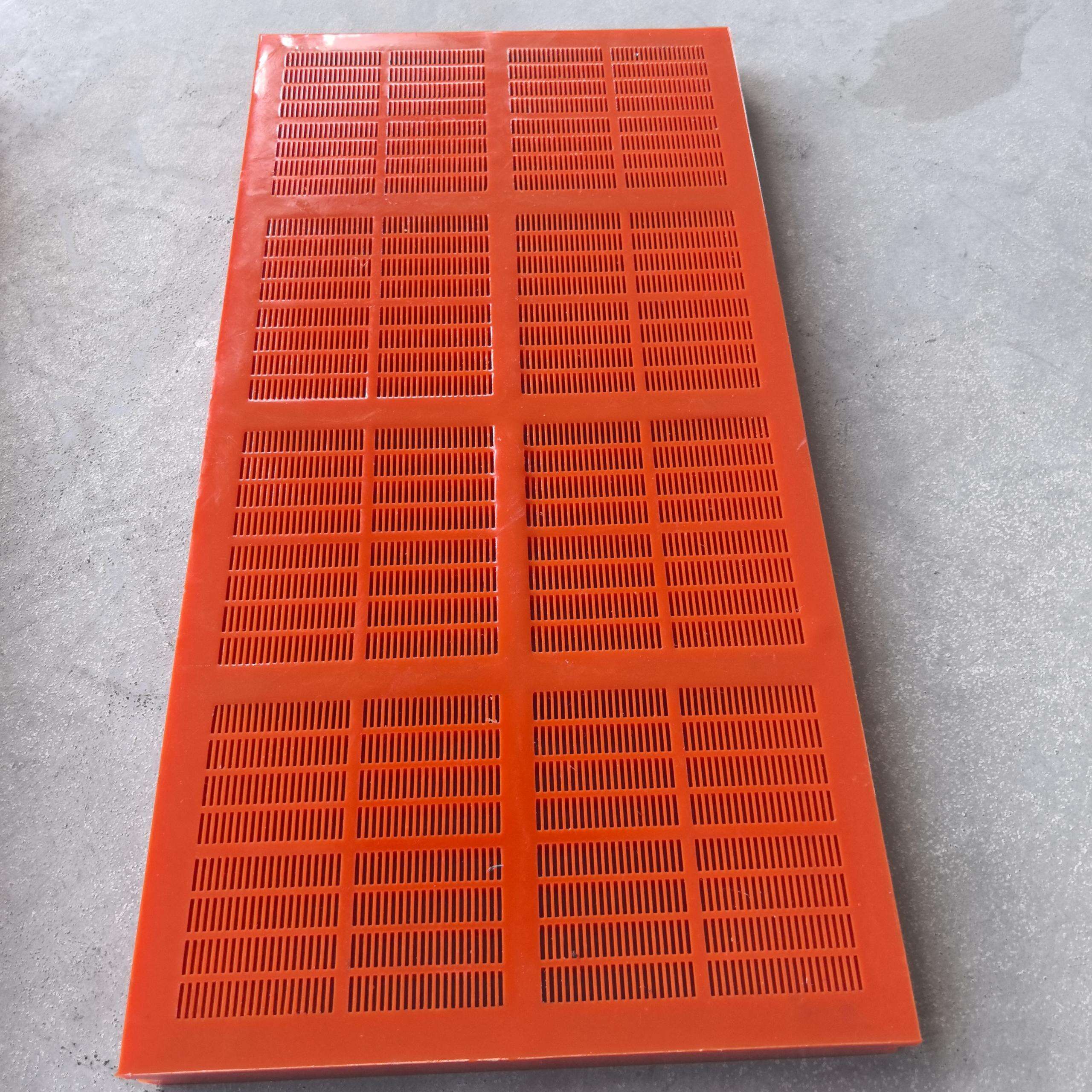How Dewatering Screens Support Municipal Solid Waste Management
Municipal solid waste management really benefits from dewatering screens, which can slash sludge volumes anywhere between 40 to 60 percent by getting rid of excess moisture effectively. When there's less water mixed in with the waste, it means lower transportation expenses and cheaper landfill charges for waste management companies. The secret sauce behind these systems? High frequency vibrations that shake out water from all sorts of materials, whether they're organic or not. This helps facilities meet those tough environmental regulations about what goes into landfills. Research into better ways to handle waste backs up just how effective this approach actually is, though results do vary depending on local conditions and implementation details.
Key Components and Working Principles of Mechanical Dewatering Screens
Modern dewatering screens rely on three core components:
- Polyurethane screening surfaces with customizable apertures (0.5–3 mm)
- Variable-angle decks (15–25°) that control material retention time
- Dual-motor vibratory drives producing 700–1000 RPM forces
This configuration consistently achieves residual moisture levels below 15%, a benchmark validated by industrial research on material recovery performance.
Typical Composition of Screened Waste: Plastics, Textiles, Paper, and Organics
| Material | Avg. Moisture Content Pre-Treatment | Post-Dewatering Target |
|---|---|---|
| Plastics | 70–80% | 12–18% |
| Textiles | 75–85% | 15–20% |
| Paper Waste | 65–75% | 10–15% |
| Organics | 85–95% | 20–25% |
Food waste and biodegradable organics pose unique challenges due to their fibrous structure and high water affinity, requiring tailored screen media and operational settings for effective dewatering.
Common Types of Dewatering Screens and Their Operational Advantages
Rotary and drum screens for high-volume municipal applications
Rotary (trommel) and drum screens handle 1,000–3,000 tons of municipal waste daily. Their cylindrical design enables continuous rotation, achieving 85–92% initial moisture reduction during downward drainage. With energy consumption as low as 15–20 kWh/ton, they are well-suited for large-scale wastewater facilities requiring uninterrupted operation.
Band and step screens: Reliability in continuous operation
Band screen systems work with overlapping plates to catch larger particles between 80 and 150 mm. Step screens take a different approach using connected paddles that separate much smaller debris ranging from 10 to 50 mm. What makes these systems stand out is their impressive 92 to 95 percent uptime in city wastewater plants. They achieve this because they have fewer components that can break down plus built-in cleaning features that stop blockages which plague older wedge wire technologies. Municipal facilities across the country have seen significant improvements after switching to these modern screening methods.
Automated screening systems for improved throughput and efficiency
Modern automated dewatering screens come equipped with load sensors and variable speed controls, which can boost processing capacity by around 40% when compared to traditional manual systems. The real magic happens with moisture monitoring technology that constantly tweaks screen angles between 3 to 7 degrees. This results in much better water removal rates too about 18 to 22% moisture remaining versus the typical 30 to 35% seen in older fixed angle models. Top tier equipment now features linear motion vibration combined with special polymer panels. These panels actually hold up about twice as long as standard stainless steel components when dealing with gritty materials, making them a smart investment for facilities handling abrasive substances regularly.
Comparative performance of dewatering screen technologies
| Metric | Rotary Screens | Band Screens | Automated Systems |
|---|---|---|---|
| Max Capacity (tph) | 250–400 | 150–220 | 180–300 |
| Moisture Reduction | 55–65% | 60–70% | 70–78% |
| Energy Use (kW·h/ton) | 0.8–1.2 | 1.1–1.5 | 0.9–1.4 |
| Footprint (m²) | 60–80 | 40–55 | 35–50 |
Data sourced from 2024 Municipal Equipment Benchmark Study
Automated systems dominate in high-organic waste processing, capturing 92% of plastic contaminants down to 5 mm, while mechanical drum screens remain cost-effective for inert bulk materials.
Optimizing Dewatering Performance and Process Efficiency
Factors Affecting Dewatering Efficiency in Sewage Screenings
Getting good results depends largely on keeping feed rates steady, choosing the right screen aperture sizes, and understanding what kind of sludge we're dealing with. These days, city garbage typically has between 22 to 38 percent organic material according to EPA numbers from last year. This higher organic content makes everything thicker and stickier, which means operators need to tweak vibration settings and adjust deck angles as conditions change. Recent research published in 2024 showed something interesting too. When waste contains significant amounts of plastic materials (at least 18%), it actually cuts down moisture removal effectiveness by around 12 percentage points when compared against waste streams rich in organic matter. This finding really highlights why facilities must invest in systems that can adapt to changing waste compositions rather than relying on fixed operational parameters.
Moisture Reduction Rates Across Different Screen Types
| Screen Type | Average Moisture Reduction | Energy Consumption | Plastic Retention Rate |
|---|---|---|---|
| Rotary Drum Screens | 68–72% | 18–22 kWh/ton | 92% |
| Step Screens | 74–78% | 24–28 kWh/ton | 88% |
| Band Screens | 63–67% | 15–19 kWh/ton | 95% |
Band screens excel in plastic recovery for recycling, while step screens deliver superior moisture reduction for landfill-bound waste.
Case Study: Dewatering Performance at a Large Urban Treatment Plant
The Detroit Wastewater Plant upgraded to AI-controlled dewatering screens in 2023, achieving:
- 40% reduction in final cake volume
- 17% lower polymer consumption
- Sustained operation at 85% capacity (up from 62%)
These improvements reduced annual disposal costs by $740,000 (Ponemon 2023), demonstrating the strong return on investment from intelligent screening technologies.
Evaluating the Adequacy of Traditional Screens for Modern Waste Loads
Old fashioned vibrating screens just aren't cutting it anymore when dealing with modern waste streams. We're seeing about 31% more synthetic fabrics mixed in these days according to the Textile Waste Index from 2024. And this causes all sorts of problems - clogged machinery means maintenance crews spend nearly three times as many hours fixing things compared to before. Some plants have had luck upgrading their equipment with those tough polyurethane panels, which actually manages to keep machines running longer by around 19%. But for bigger operations handling more than 500 tons each day, most find they need completely new systems installed if they want to properly handle all this mixed composite waste without constant breakdowns.
Integration with Waste Disposal Systems and Environmental Impact
Challenges in handling and transporting dewatered screenings
Despite moisture reduction, dewatered screenings retain 20–30% water, promoting odor and microbial growth during storage. This complicates logistics, especially in urban areas where emissions standards are strict. Specialized containment vehicles and active odor control measures often become necessary, increasing operational costs.
From screen to disposal: Compliance and logistical considerations
Treatment plants must align operations with tightening environmental regulations. Integrated mechanical-biological treatment systems help meet compliance thresholds for disposal. Transport now requires sealed containers and real-time moisture tracking to prevent leachate spills en route to landfills or incinerators, as shown in analyses of modern waste management frameworks.
Reducing environmental footprint through effective dewatering
Efficient dewatering reduces landfill mass by 35–50%, directly minimizing leachate production and methane emissions. According to environmental risk mitigation studies, optimized dewatering contributes to a 20–30% reduction in greenhouse gas output compared to disposing of untreated waste.
Emerging Innovations and Future Trends in Dewatering Technology
Smart Monitoring and Automation in Dewatering Screen Operations
IoT-enabled sensors and programmable logic controllers (PLCs) now allow real-time monitoring of moisture levels (typically 15–20% post-screening) and throughput. Operators can remotely adjust vibration intensity and screen angles, improving responsiveness. Facilities using these systems report 22% fewer unplanned shutdowns than those relying on manual controls.
Energy-Efficient Designs in Next-Generation Dewatering Equipment
Manufacturers are focusing on lowering energy use without sacrificing performance. Hydrophilic screen coatings accelerate water separation by 30%, while variable-frequency drives reduce power consumption by 18–25%. Recent data indicates a 35% drop in energy usage across next-generation models, supporting global sustainability goals.
AI and Predictive Maintenance: The Future of Intelligent Screening Systems
Machine learning algorithms analyze historical performance to predict component wear. Early adopters have extended screen panel life by 40% and cut repair costs by $12–18 per ton processed. These systems detect anomalies—such as unbalanced vibrations or bearing degradation—weeks before failure, enabling proactive maintenance.
Balancing Cost, Durability, and Innovation in Technology Upgrades
Municipalities face key tradeoffs when upgrading infrastructure. High-performance polyurethane panels cost 60% more than stainless steel but last three times longer in abrasive conditions. Hybrid approaches—using retrofit automation kits ($25k–$50k per unit) on existing screens—deliver a 65% ROI within 18 months through enhanced efficiency and reduced downtime.
FAQ
What are dewatering screens used for?
Dewatering screens are used in municipal solid waste management to reduce sludge volumes by removing excess moisture, which cuts transportation and landfill costs.
How do dewatering screens work?
Dewatering screens use high-frequency vibrations to extract water from organic and inorganic materials, helping facilities comply with environmental regulations.
What types of materials can dewatering screens process?
They can effectively process plastics, textiles, paper, and organic waste, achieving significant moisture reduction.
What are the advantages of automated dewatering screens?
Automated setups offer improved throughput and efficiency through load sensors and variable speed controls, resulting in better moisture removal rates and extended equipment life.
Table of Contents
- How Dewatering Screens Support Municipal Solid Waste Management
- Key Components and Working Principles of Mechanical Dewatering Screens
- Typical Composition of Screened Waste: Plastics, Textiles, Paper, and Organics
- Common Types of Dewatering Screens and Their Operational Advantages
- Optimizing Dewatering Performance and Process Efficiency
- Integration with Waste Disposal Systems and Environmental Impact
- Emerging Innovations and Future Trends in Dewatering Technology
- FAQ

